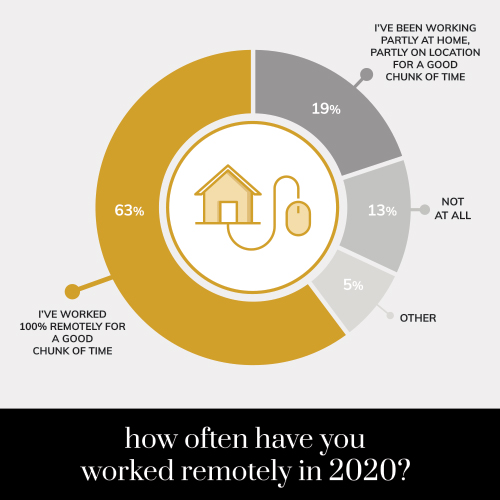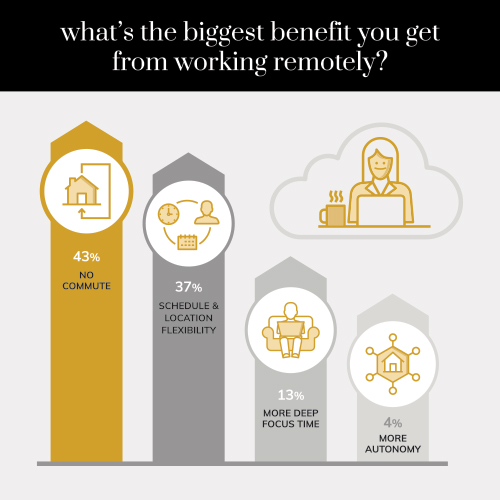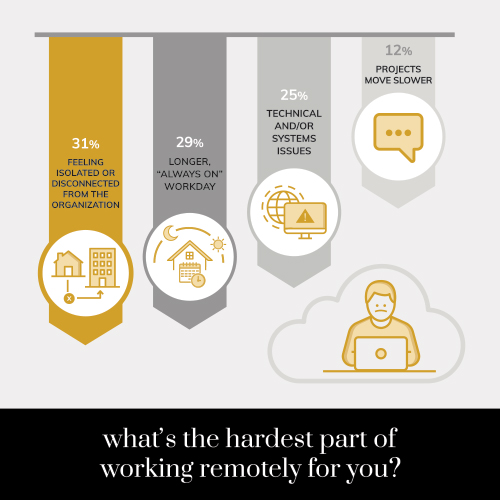On our worst days in years past, remote work was like a mirage. An image of perfection – of cool breezes and comfortable freedom hidden away from the monotony of the cultural desert called the “office.”
It functioned like a paradise mostly out of reach. We could step inside the cool, calm hush for a day here and there. But the next morning, parked back at our desks, it might as well have been a dream.
Fast forward to now, and the mirage has evaporated. The sweet, clean promise of remote work has slipped into the grimy reality of every day.
Now that we’ve lived it for more than a few months, is remote work a savior? Or has easy couch-lounging transformed into a hunched living room prison sentence?
We surveyed a diverse cross-section of professionals with backgrounds in financial services, engineering, manufacturing, information technology, and marketing, among others. Here’s what we found out.
State of Remote Work, 2020
The US Bureau of Labor Statistics reported that in 2019, 16% of the US workforce worked remotely at least part of the time.
As you’d imagine, remote work in 2020 so far has taken a giant step up.
82% of the 172 people we surveyed worked remotely at least part of the time in 2020.

Significant Upsides…

Our respondents say the most important benefit of remote work has been cutting out the commute (43%).
Schedule and location flexibility come in close behind at 37%.
Not needing to leave home appears to have a huge impact on our satisfaction.
That could be for several reasons. Perhaps we enjoy the extra time we “get back” in our day, however we may use it.
Maybe navigating traffic or crowds takes a toll on our energy or happiness. Less obviously – maybe we relish staying still.
Flexibility – the runner up – has everything to do with autonomy. Even as the “where” becomes less and less flexible under lockdown orders, the freedom to choose “when” you start, end, and pick your day back up gives remote work a lot of its shine.
…and Decided Drawbacks
Remote work is not all upside, however.
The top 3 drawbacks of remote work are neck-in-neck with each other…
31% pointed to a feeling of isolation or disconnection from their organization.
29% indicated that remote work has created longer workdays with fewer clear stopping points.
And 25% experience systems issues that highlight an undercooked remote infrastructure.

These popular problems could reflect how quickly and unexpectedly organizations were forced to go remote.
Whether through culture-building efforts, more frequent communications, or just plain old investment in technology, leadership could theoretically mitigate these issues over time.
The Future of Remote Work
How do the negatives stack up against the positives? It all comes down to a question of how people would prefer to work going forward. And their answer is loud and clear.
Remote work HAS in large part lived up to its promise.

94% of respondents prefer to work remotely – at least part of the time.
51% of survey respondents said they’d want a combination of remote and in-office work.
43% said they’d like to go all-in on remote.
And only 6% preferred that they work in the office all the time.
What does this mean for the future of our working lives?
These results – as limited as they are – lead one to believe that remote work isn’t going anywhere.
Organizations do need to embrace it as an undeniable feature of our new working landscape. And that means they’ll need to do their best to optimize it.
As employers, how can we devise a framework that maximizes the value of in-person collaboration and of remote-style autonomy? Our consultants have some ideas…
contact us:
let’s talk
SEND US A MESSAGE.

